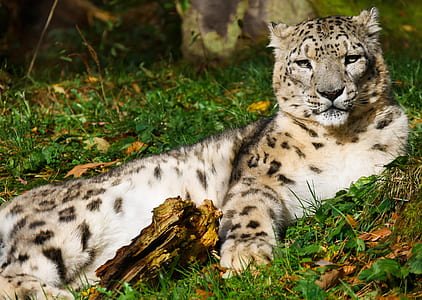
Asian Leopard cats, found all through Asia, are most popular in the United States as precursors of our Bengals. Reproducers crossed the wild Asian felines with American shorthairs to make the intriguing, inviting kitties that have enchanted numerous individuals. Your Bengal’s eccentric conduct could possibly notice back to his wild predecessor.
While some early reproducers of Bengals kept panther felines, they ordinarily hold their wild qualities and don’t adjust well to homegrown life. The present Bengals are ages eliminated from their Asian ancestors, and raisers at this point don’t look for panther felines for the genetic supply.
Furthermore, the Convention on International Trade in Endangered Species of Wild Flora and Fauna has sorted the species as jeopardized, and possession may be dependent upon neighborhood and state, just as global, limitations.
You can appreciate the shocking looks of the panther feline in your Bengal kitty while valuing his tender, human neighborly character.
Behavior and life span:
Contents
Asian leopard cats can endure and flourish in an assortment of territories and adjust their conduct to their current circumstance.
They’re generally dynamic around evening time and can chase in trees, on the ground, and even in water. On the off chance that your Bengal shows an un-catlike affection for your bath, it’s most likely on the grounds that his precursors were so happy with swimming.
He may appreciate moving to high roosts around your home for comparable reasons. In contrast to a considerable lot of their homegrown family members, however, panther felines don’t play with or bother their prey. Aside from mating season, they like to be distant from everyone else, adhering to their own domain.
How Asian leopard cats behave with human beings?
Most panther felines dodge contact with individuals, however, they regularly live close to ranches and provincial towns, where they can discover a lot of prey.
They help with bother control by chasing rodents, mice and different rodents, charming themselves to individuals who at times do attempt to tame them and give them a home.
Shockingly, they’re additionally partial to chicken, which has prompted numerous conflicts with other human neighbors. On the off chance that your Bengal is a superb tracker with a preference for poultry, those panther feline qualities may be appearing.
Parenting of this pet:
Like most cats, leopard cats are regional and mark their turf by peeing. (Sound natural?) While the size of their reach fluctuates, the felines by and large search out a recognize that has the two trees and water.
Guys and females may share part of a similar region and mate with one another. Some examination proposes that mother felines like to conceive offspring and raise their little cats in forested regions, where they can undoubtedly discover ensured territories for nooks.
Guys may fill in as auxiliary guardians for their litters. In their regular territory, Asian leopard cats have mated with homegrown kitties, similarly as in Bengal rearing projects.
Diet:
The Leopard Cat is a flesh-eater and feeds essentially on little creatures. A portion of their number one food sources are rodents, mice, hares, bunnies, flying creatures, reptiles, and even bats.
Across their reach, various felines have various weight control plans. Felines in certain territories feed on more rodents and mice while felines in different zones chase a more extensive assortment of prey.
These cats are snare trackers, and generally utilize thick vegetation and tall grasses to sneak up on their prey. These felines additionally climb trees to chase and swim to get fish and shellfish.
Does a leopard cat make a good pet?
While Bengal feline mixtures may make great pets, wild Leopard Cats don’t. The Bengal feline half and halves that individuals keep as pets are a few ages eliminated from their wild cousins, and accordingly carry on significantly more like homegrown felines.
Wild Leopard Cats are amazingly bashful and don’t prefer to communicate with people in any capacity.
Characteristics:
The layer of the panther feline is normally yellowish or ruddy earthy colored above, white beneath, and intensely set apart with dim spots and streaks. The length of the creature goes from 45 to 75 cm (18 to 30 inches), barring the 23–35-cm (9–13.8-inch) tail.
The panther feline is a nighttime tracker, going after flying creatures and little vertebrates (remembering homegrown fowl for certain territories). It breeds in spring (conceivably again later in the year in Malaysia).
Litters comprise of two to four youthful, and the growth time frame is around 56 days.
Final thoughts:
Asian leopard cats are the size of enormous housecats. Overall, they weigh somewhere in the range of 3 and 7 kg. As a rule, they have pale, brownish pelage with a white paunch.
Their body and tail are covered with rosettes and their tail is regularly ringed at the tip. Four longitudinal groups run from their brows to their necks. Their head to body length goes from 44.5 to 107 cm, and their tail goes from 23 to 44 cm.
Panther felines have a little head with a short gag and round ears.
There are contrasts in coat length and shading dependent on neighborhood ecological conditions. At more northern scopes their hide is longer and paler, and they normally gauge more. Their shading shifts with natural surroundings.
For instance, people in blanketed natural surroundings have lighter pelage than those in intensely forested environments, which will in general have dim brownish pelage.